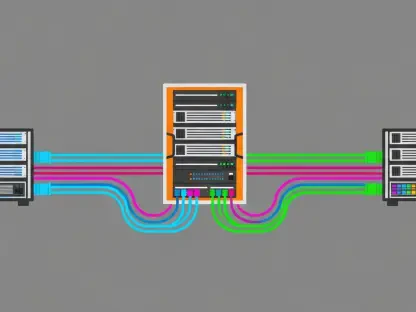AI-driven predictive maintenance is emerging as a transformative force in power plant operations. This cutting-edge technology leverages vast amounts of real-time data and advanced machine learning models, helping operators optimize efficiency, reduce emissions, and prevent costly equipment failures. Traditional maintenance practices, typically reactive and less precise, are quickly being outpaced by the capabilities of AI-driven solutions.
Benefits of AI in Predictive Maintenance
Cost Reduction and Equipment Availability
One of the primary advantages of AI in predictive maintenance is its ability to significantly lower maintenance costs and improve the overall economics and reliability of power plants. Industry estimates highlight that AI-driven analytics can reduce maintenance costs by up to 30% and increase equipment availability by 20%. This is accomplished through early detection of wear and failure indicators, allowing for timely and effective interventions that preempt more serious problems before they escalate. By accurately predicting when maintenance is required, AI can help power plants avoid unnecessary shutdowns and reduce the frequency of repairs, thereby ensuring smoother and more efficient operations.
Moreover, AI-driven predictive maintenance ensures more consistent and reliable power plant performance. By continually analyzing data from equipment sensors, AI systems can detect anomalies and trends that might indicate potential issues. This proactive approach not only extends the lifespan of machinery but also enhances overall plant efficiency, leading to lower operating costs and higher revenue. Implementing AI in maintenance strategies transforms the traditional reactive approach into a more reliable and cost-effective preventive framework, which is crucial for maintaining the long-term viability of power plants.
Reducing False Alarms
Traditional maintenance strategies often rely on periodic inspections and reactive repairs, resulting in a high volume of false alarms that create excessive noise for control room operators. While the advent of sensor data has improved monitoring capabilities, the reliance on predefined thresholds still triggers numerous unnecessary alerts, overwhelming operators and potentially leading to critical alarms being overlooked. These issues underscore the need for a more intelligent system that can differentiate between genuine issues and false positives, providing operators with clearer and more accurate information.
AI-powered predictive maintenance addresses this challenge by building anomaly detection models trained on historically stable behavior of equipment. These sophisticated models can identify authentic anomalies and differentiate from false alarms, significantly reducing the volume of unnecessary alerts. The AI system continuously learns from new data, refining its ability to detect anomalies with greater precision. This leads to a quieter, more manageable control room environment where operators can focus on addressing genuine issues promptly, ultimately boosting the reliability and efficiency of power plant operations.
Advanced AI Models for Predictive Maintenance
Multi-Variate Anomaly Detection Models
This category of models employs machine learning techniques such as isolation forests or neural networks (LSTMs and RNNs). These models, akin to digital twins, are usually built for specific failure modes or equipment types and play a crucial role in auto-detecting anomalies. They can identify subtle deviations from normal behavior, which might be missed by traditional monitoring methods. When combined with explainability modules like SHAP (Shapley Additive Explanations), these models can pinpoint key drivers or root causes of anomalies, offering critical insights for maintenance teams to act upon.
Additionally, Multi-Variate Anomaly Detection Models enhance the accuracy of predictive maintenance by considering multiple variables concurrently. This holistic approach ensures that complex interdependencies within equipment systems are accounted for, providing a more comprehensive understanding of equipment health. By identifying patterns and correlations across various data points, these models can detect early warning signs of potential failures, enabling timely interventions that prevent more significant issues down the line. The ability to explain and interpret the results further empowers maintenance teams to make informed decisions, optimizing maintenance schedules and improving overall plant reliability.
Probability of Failure and Aggregate Anomaly Signal Models
Also referred to as the model-of-models approach, this technique involves creating a predictive model for every key variable or parameter associated with a piece of equipment. The aggregate error signal generated from the combined models can indicate anomalies when it spikes, reflecting deviations from the stable operational state of the equipment, where parameters typically show high correlation. This method ensures robust prediction capabilities by leveraging multiple data streams, offering a more reliable and nuanced understanding of potential equipment failures.
Probability of Failure and Aggregate Anomaly Signal Models provide a more granular level of analysis, allowing maintenance teams to pinpoint specific areas of concern within complex machinery. By monitoring the aggregate error signal, these models can effectively identify and rank the probability of failure for different components. This prioritization helps maintenance teams allocate resources more efficiently, focusing on high-risk areas and ensuring critical issues are addressed promptly. The ability to predict failures with higher accuracy minimizes unexpected downtime and reduces overall maintenance costs, contributing to more efficient and reliable plant operations.
Federated and Transfer Learning Models
Federated and transfer learning models address the challenge of insufficient failure data for newly installed or rarely failing equipment. These models train AI using data from similar equipment across different units or plants. Federated learning allows knowledge sharing without transferring sensitive operational data, facilitating advanced predictive capabilities even for plants with limited historical data. This approach ensures that AI models remain accurate and effective, even when dealing with new or infrequently failing machinery, thereby enhancing the overall reliability of predictive maintenance systems.
Furthermore, federated and transfer learning models enhance the adaptability and scalability of AI-driven predictive maintenance solutions. By leveraging shared knowledge from a broader dataset, these models can quickly adapt to new scenarios and equipment types without extensive retraining. This flexibility is particularly valuable in dynamic environments where equipment configurations and operating conditions may vary significantly. The ability to transfer learning from one system to another ensures that AI models remain relevant and effective, providing consistent performance improvement across diverse power plant environments and contributing to more reliable and cost-effective maintenance strategies.
Real-World Impact and Broader Implications
Success Stories
One notable example is a large utility in the southern U.S. that deployed AI-powered models across various use-cases. This deployment led to improvements in heat rate efficiency by 1% to 3%, reduced forced outages across 67 generation units, and realized approximately $60 million in annual savings. Additionally, carbon emissions were reduced by 1.6 million tons, equivalent to removing 300,000 cars from the road. This success story underscores the substantial economic and environmental benefits that AI-driven predictive maintenance can offer, validating its transformative potential in the power generation sector.
Such real-world implementations demonstrate how AI can optimize power plant operations and drive significant improvements in efficiency and sustainability. As more utilities adopt AI-driven predictive maintenance, the cumulative benefits across the industry could be enormous, leading to more reliable power generation, lower operational costs, and a reduced environmental footprint. The positive outcomes from these early adopters serve as compelling evidence for other power plants to explore and invest in AI technologies, paving the way for widespread adoption and further innovation in the field.
Future Outlook
AI-driven predictive maintenance is revolutionizing operations in power plants with its transformative capabilities. This innovative technology utilizes enormous amounts of real-time data alongside sophisticated machine learning algorithms to help operators enhance efficiency, lower emissions, and avert expensive equipment breakdowns. In contrast, traditional maintenance practices are predominantly reactive and lack precision, relying more on scheduled checks and after-the-fact repairs. AI-driven solutions offer a proactive approach, predicting potential issues before they manifest, thereby ensuring smoother operations and extending the lifespan of critical components. By anticipating problems, these systems allow for timely interventions which can significantly cut downtime and maintenance costs. Furthermore, the environmental impact is positively influenced as optimized operations typically lead to reduced emissions. As the power industry continues to evolve, the integration of AI-driven predictive maintenance is becoming indispensable, showcasing technology’s ability to replace outdated methods and drive progress in maintaining essential infrastructure.









